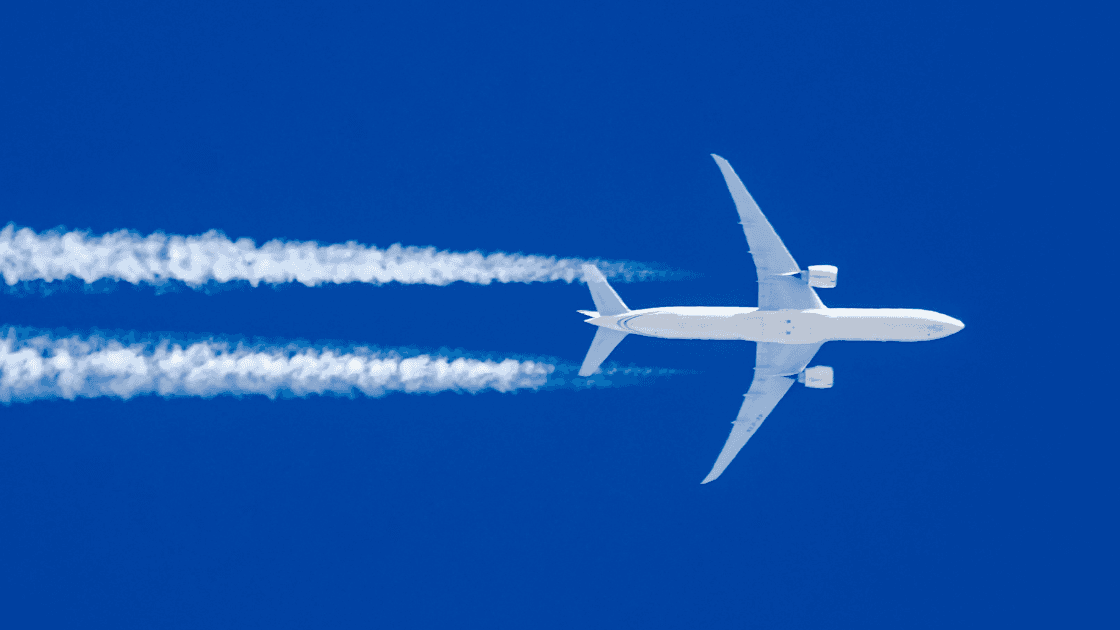
Flights
•08 min read

Did you know that more than 15.2 crore passengers traveled by air in India in 2023? This staggering number highlights the significance of understanding flight capacity, especially when planning your journey. Knowing how many passengers can travel in flight is crucial for ensuring a comfortable and well-organized trip.
Flight capacity refers to the maximum number of passengers an aircraft can carry. This capacity is determined by several factors, including the type of aircraft, airline policies, and regulatory requirements.
Different aircraft models have varying seating arrangements and capacities. For instance, narrow-body aircraft typically have a single aisle and fewer seats, while wide-body aircraft have multiple aisles and can accommodate more passengers. Understanding the specific model of the aircraft can give you a good idea of its capacity.
Airlines like Air India and Air India Express have their own seating configurations and policies that influence flight capacity. These policies can include the allocation of seats for different classes, such as economy, business, and first class.
Safety regulations set by aviation authorities also impact the number of passengers allowed on a flight. These regulations ensure that there is adequate space and resources for all passengers, including emergency equipment and exits.
Aircraft can be broadly categorized into narrow-body and wide-body types, each with its own seating arrangements and capacities.
Narrow-body aircraft, such as the Airbus A320 and Boeing 737, typically have a single aisle and can seat between 150 to 200 passengers. These aircraft are commonly used for short to medium-haul flights.
Wide-body aircraft, like the Boeing 777 and Airbus A380, have multiple aisles and can accommodate between 300 to 600 passengers. These aircraft are designed for long-haul international flights, offering more space and comfort.
The Air India fleet includes models such as the Boeing 787 Dreamliner, which can seat around 256 passengers, and the Airbus A320, which can seat approximately 180 passengers. Air India Express operates Boeing 737-800 aircraft, with a seating capacity of around 189 passengers.
Airlines use various methods to determine the optimal number of passengers for each flight.
The seating configuration, including the allocation of economy, business, and first-class seats, plays a significant role in determining passenger limits. Premium classes typically offer more space and amenities, reducing the overall number of seats available.
The load factor is a measure of how full a flight is. Airlines aim to optimize the load factor to ensure profitability while maintaining passenger comfort. This involves balancing the number of passengers with operational considerations like fuel and cargo.
Factors such as cargo weight, fuel requirements, and crew needs also influence the number of passengers an aircraft can carry. Airlines must ensure that the aircraft remains within safe operational limits.
-95e61ea7-ab4c-459c-9b20-5d183cfc507b.png&w=3840&q=75)
Understanding flight capacity can significantly enhance your travel experience.
Knowing the capacity of your flight can help you find the best seats. Use airline seating charts to identify seats with extra legroom or those located in quieter sections of the plane.
Choosing flights with lower occupancy can lead to a more comfortable journey. Less crowded flights often mean shorter boarding times, fewer delays, and a more relaxed atmosphere.
Adhering to passenger limits is crucial for safety. Overcrowded flights can lead to discomfort and potential safety hazards, so it's essential to travel with airlines that prioritize passenger well-being.
Did You Know?
Air India and Air India Express offer extensive domestic and international connectivity, ensuring you always have a reliable flight option. Their commitment to punctuality and premium services makes them a top choice for travelers.
The seating capacity is determined by the type of aircraft, airline policies, and regulatory requirements.
Wide-body aircraft can carry between 300 to 600 passengers, while narrow-body aircraft typically seat between 150 to 200 passengers.
Airlines allocate seats based on the class of service, with premium classes offering more space and amenities, reducing the overall number of seats available.
Factors include the type of aircraft, airline policies, regulatory requirements, cargo weight, fuel needs, and crew requirements.
You can check the airline's website or use online seating charts to view the seating arrangement for your specific flight.
In conclusion, understanding flight capacity is essential for planning a smooth and comfortable journey. By knowing how many passengers can travel in flight, you can make informed decisions about booking and seating. For a seamless travel experience, consider booking your next flight with Tata Neu, where you can enjoy the reliability and premium services of Air India and Air India Express.
Understanding Flight Capacity: Helps in better planning and booking.
Choosing the Right Airline: Opt for Air India and Air India Express for reliable and extensive connectivity.
Maximizing Comfort: Use seating charts to select the best seats for your needs.
The aviation industry in India has seen a remarkable resurgence post-COVID-19. Several factors contribute to this growth, including the increasing demand for air travel, government initiatives like the UDAN scheme, and the expansion of airport infrastructure.

The Indian government has launched several initiatives to boost the aviation sector. The UDAN (Ude Desh ka Aam Naagrik) scheme aims to make air travel affordable and widespread by connecting underserved and unserved airports. This has significantly increased the number of domestic routes and made air travel accessible to a larger population.
India has been investing heavily in airport infrastructure to accommodate the growing number of passengers. New airports are being built, and existing ones are being expanded and modernized. This not only enhances the passenger experience but also increases the capacity to handle more flights and passengers.
Technological advancements in aircraft design and operations have also played a crucial role. Modern aircraft are more fuel-efficient, have longer ranges, and offer better passenger comfort. These advancements make it feasible to operate more flights, including long-haul international routes.
Flying can have several health implications, especially on long-haul flights. It's important to be aware of these and take necessary precautions.
Long periods of immobility during flights can increase the risk of Deep Vein Thrombosis (DVT). Passengers are advised to move around the cabin, stretch their legs, and stay hydrated to mitigate this risk.
Altitude changes can affect passengers differently. Symptoms like headaches, dizziness, and nausea are common. Staying hydrated and avoiding alcohol can help alleviate these symptoms.
The cabin air in airplanes is often dry, leading to dehydration. Drinking plenty of water and using moisturizers can help keep you hydrated and comfortable during the flight.
Stress and discomfort during flights can sometimes lead to aggressive behavior. It's important to stay calm, follow cabin crew instructions, and be considerate of fellow passengers to ensure a pleasant journey for everyone.
Being prepared can make your travel experience smoother and more enjoyable. Here are some travel essentials to consider:
Ensure you have all necessary travel documents, including your passport, visa, and boarding pass. Keep them easily accessible for a hassle-free check-in and security process.
Items like neck pillows, eye masks, and earplugs can enhance your comfort during the flight. Consider packing these in your carry-on luggage.
Carry essential health and hygiene items like hand sanitizers, face masks, and medications. These can help you stay healthy and comfortable during your journey.
Long flights can be tedious, so bring along books, magazines, or electronic devices loaded with your favorite movies, music, or games to keep yourself entertained.
Understanding flight capacity and the various factors that influence it can greatly enhance your travel experience. From booking the best seats to being aware of health considerations, this knowledge empowers you to make informed decisions. As the aviation industry continues to grow and evolve, staying informed will ensure that you have a safe, comfortable, and enjoyable journey. Whether you're flying domestically or internationally, always choose reliable airlines like Air India and Air India Express for a seamless travel experience.